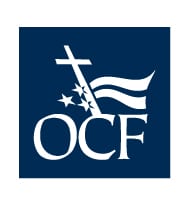In our world there exists a specialized group of trees that are called “hyperaccumulators.”
These trees have the amazing capacity to draw toxic heavy metals out of the ground. This process is called “phytoextraction.” The trees absorb from the ground such poisonous metals as cadmium, nickel, selenium, thallium, manganese, and arsenic. These toxins are deadly to most other plants.
Special Trees
“Hyperaccululator trees” comprise a number of different species from Italy, Zimbabwe, Western Australia, as well as in other parts of the earth. Sadly, they are all listed as endangered species.
But the media has focused on one particular species, Pycnandra acuminate of New Caledonia in the Southwest Pacific. Pycnandra acuminate extracts so much metal from the ground that its sap, a blue-green latex, is 20–25% nickel.
Why does this tree, as well as the other “hypers,” have this unique ability? Scientists believe these trees use the high levels of heavy metals to protect themselves from insects and fungi. They also suspect that, as these “hypers” shed their leaves, they prevent competing trees from crowding them.
The ability of these trees to clean the earth of toxins has stirred the scientific community. Think of the thousands of places on our planet that have been contaminated by the industry of man. Scientists believe these “hypers” could be planted and used in such locations to purify such toxic sites.
The Cross to a Tree

You know, the ability of the “hyperaccumulator” trees to cleanse the earth of toxins parallels the work of the cross of Jesus Christ. It’s interesting that the writers of the New Testament sometimes refer to the cross (the Greek word stauros) as a “tree” (the Greek word xulon). For instance, look at St. Paul’s words in Galatians 3:13. “Christ redeemed us from the curse of the law, having become a curse for us—for it is written, ‘Cursed is everyone who is hanged on a tree.’” Look also at St. Peter’s words in 1 Peter 2:24. “He Himself bore our sins in His body upon the tree, that we might die to sin and live to righteousness.” Other such references to the cross as “a tree” occur in the sermons of the apostles (Acts 5:30; 10:39; 13:29).
Why did the apostles sometimes refer to the cross as a tree? One reason was that the law places a curse on anyone who is hanged on a tree (Deuteronomy 21:23). Paul himself quotes this verse in Galatians 3:13 and sees a connection between that curse and the judgments which fell on Jesus upon the cross. Thus the cross–the ultimate altar of burnt offering–absorbed the terrible judgments of God for us. This was visualized in the Old Testament when the fire of God feel upon the sacrifices laid upon God’s altar (Leviticus 9:23–24; 1 Kings 18:30–39; 1 Chronicles 21:26; 2 Chronicles 7:1). The cross of Jesus Christ is where the full fury of God’s fiery wrath fell. Therefore, judgment for the believer is forever past. There is no condemnation, judgment, or wrath for those who seek refuge in Jesus (John 3:18; 5:24; Romans 8:1; 1 Thessalonians 1:10; 5:9).
The History
Another Old Testament parallel between a tree and the cross of Jesus is found in Exodus 15:22–25. This passage describes the Israelites coming from the Red Sea to the Wilderness of Shur. There, at a place called Mara, the Israelites became thirsty but were unable to drink the waters because they were toxic. Moses cried out to the LORD, who showed him a nearby tree. God told Moses to cut down tree and cast it into the toxic waters. When Moses did so the waters became “sweet” and pure, and satisfied the thirst of the Israelites. The tree absorbed all the toxicity and bitterness of the waters. In the same way the cross of Jesus absorbed bitterness of God’s judgment against our sins.
The tree upon which Jesus died was the ultimate “hyperaccumulator.” The Christ who died upon it takes away all of sin’s toxicity and all of life’s bitterness. The crucified Christ fully absorbed the wrath and judgments of God. So that upon all those who seek refuge in Jesus, God may lavish His love (1 John 3:1).
PRAYER:
Dear Lord Jesus, to You alone I cling, seeking refuge under Your wings–not only from the storms of life but also from the judgments and wrath to come. Lord Jesus, you are my salvation and my righteousness. I trust no other but You. Amen.
In article photo: iraq by The U.S. Army licensed under CC BY 2.0
Note: Though the typical Greek word for “tree” is dendron, not xulon, yet the Bible of the early church, the Greek Septuagint, uses xulon for tree in those very passages of Exodus 15:25 and Deuteronomy 21:23
Other information from: https://nph.onlinelibrary.wiley.com/doi/full/10.1111/nph.15105
https://www.bbc.com/news/science-environment-45398434







